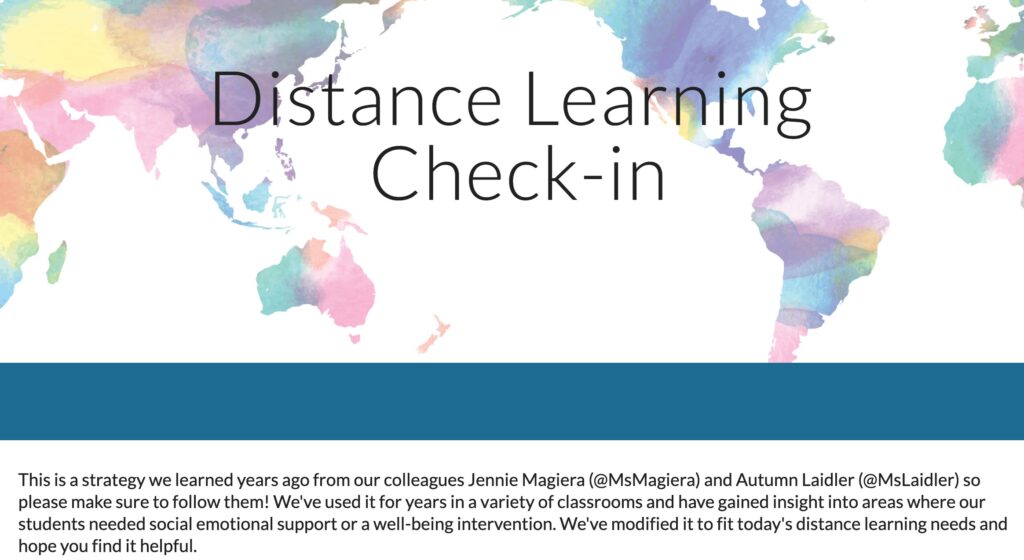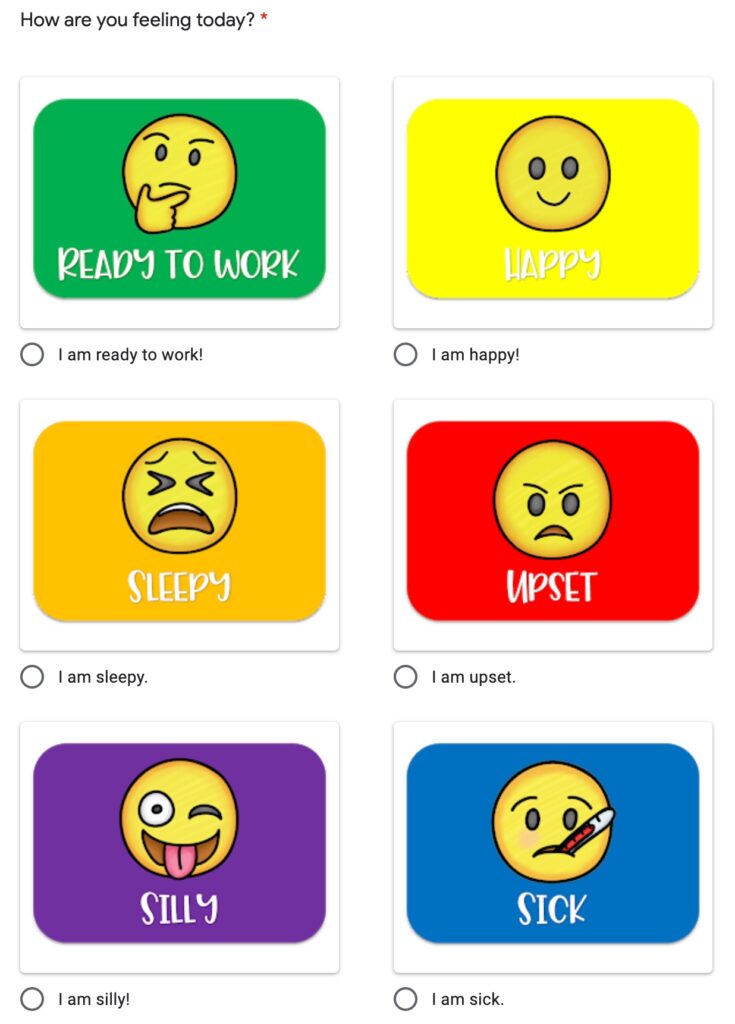Ways to move beyond “I’m fine”
How are you? No, really.
How are you?
Right now, that’s a tough question for me to answer. Most days when asked this question, I take a shallow breath and reply, “I’m fine.”
But I really notice when someone takes a look in my eyes and sincerely asks me this question. When I feel like the person is really and truly trying to check-in with me and see if I’m okay, my answer is always different.
- “I’m surviving.”
- “Eh, I’m struggling.”
- “I’m halfway decent.”
I might even want to answer the question with an emoji. 🤷🏼♀️ 👀 🤦🏼♀️
Our students need a trusted adult to sincerely check in with them, as well.
Someone needs to ask them every day – How are you? What do you need?
In schools, we have some structures in place to make sure that someone is checking in with every child. Our advisory system should be the place to ensure that happens. The advisor’s role is to be the advocate and adult connection for every student. An advisor is meant to be the adult that knows this child well.
So, it makes perfect sense that advisors are the person who checks in on the emotional and academic well-being of every child. And I’d like to help you create a process for making advisor check-ins an effective and meaningful support system for your advisory students.
We all need support systems, but especially now.
Choose your purposes for check-ins
There are many aspects of student life that an advisor could possibly inquire about and offer support. While all aspects are worthy and important, if we group them all together it can turn into a laundry list. We don’t want to set ourselves up for failure by unrealistically thinking we can check in on all things at all times. You might start as an advisor or advisory team by asking yourselves what information you will prioritize during Advisee Check-ins.
Which of these questions will you target with your advisees?
- How is your emotional health?
- How are you feeling physically?
- Do you have enough food at home?
- How is your family?
- Hey, how is your technology and ability to connect to the internet at home?
- How has your school attendance been?
- What factors impact your school attendance?
- How are your friendships?
- Do you feel connected to people right now?
- How have you been doing with completing your work for school?
- Has the work been too hard, too easy, or just right?
As you can see, the list of possible topics for check-ins with our students is long and deep. I think it’s important for you, your team, or your school to decide what feels right for your environment.
Consider these two formats to use for checking in with your advisees:
Make time for a personal video connection
While this is the more laborious strategy of the two, it’s important. Each student needs a chance to look into the eyes and talk frequently with his/her/their advisor in a private setting. During a pandemic, I would suggest a zoom call every week or two. Because even if you are seeing a student fully in-person, nothing feels very personal in these circumstances.
Every child deserves to have their own solo time to connect with the advisor. Make space in the school day to conduct a virtual one on one check-in with students in your advisory. If you don’t find time to connect with everyone once a week, make a staggered schedule that allows you to have 10 minutes with each advisee over the course of two weeks.
During emergency learning in spring of 2020, my daughter Jane’s teacher did this beautifully.
Every week she published a schedule including Zoom links for each person’s one on one check-in. I observed that Jane was pretty candid about her own status and wellness when it was just her and the teacher. And to see her teacher’s face and get to have a brief chat? That was always a highlight of her day! While this takes time, we know that it makes a difference.
But there are also quicker and easier ways to also check-in with your students every week or even every day.
Use Google Forms for Weekly and Daily Check-ins
This is a copy of The Distance Learning Check-in that’s been adapted from Jenny Magiera and Autumn Laidler.
This form looks like it could be used daily. It asks students how they are really doing, in addition to their previous night’s bedtime and whether or not they ate breakfast.
(Caveat: we know some of our students are experiencing food insecurity or working with an eating disorder, or both, so that is absolutely a thing to bear in mind here. Especially if you too are experiencing food insecurity or working with an eating disorder).
Edmunds Middle School educator Laura Botte has long been using the Google form for Morning Check-in.

Jennifer Lindley shares a library of Google Forms and materials on her blog. She has created and shared copies of her weekly and daily check-in forms that she uses with her 4th and 5th graders. Ms. Lindley also has an end of day and end of week form available.
I especially like Lindley’s Beginning of the Day Check-In form and its use of emojis.
C’mon, sometimes all we can do is describe how we’re feeling with an emoji.
The most important aspect of these Google forms is how I respond as the teacher.
Some follow up communication is needed in order to support students. If one of your advisees gives you an angry, sick or sad emoji, know what resources you have to call on in your school community when you follow up with them. Can you simply open a window and whisper your principal’s name to the wind and they will appear? Do you have a school counselor or nurse you can bounce ideas off of?
Use those resources in helping you support that student, so you don’t have to go it alone. Maybe an email that simply says,
“Hey [student name],
I saw that you indicated that you were feeling angry today. What’s up? What can I do to help? I’m thinking about you.”
Hey. I’m thinking about you.
Tiny phrase, HUGE impact.
Feel free to use it even with students who answer you with 👍🏽 or 😊. Because we know we are thinking of them, and it will help them to know too.
What if someone always says they are happy? Or silly? Or ready to work? Well, that deserves to be acknowledged too.
It might not need immediate attention, but you might bring it up in the personal video conference. You might say, “Wow. You have responded that you are happy for every day this week! Are you really always happy..? Golly, tell me how you do it.” Again, we are building our connection and acknowledging their feelings.
Teaching and learning during a pandemic is tough. Heck, almost everything is hard right now. And we’re struggling to support the social and emotional lives of our students.
I’d love to hear from you.




